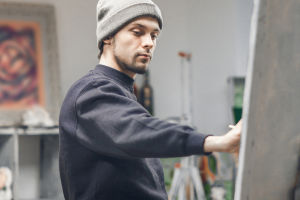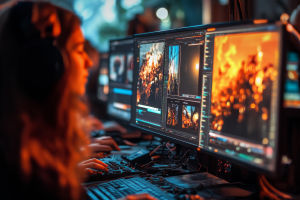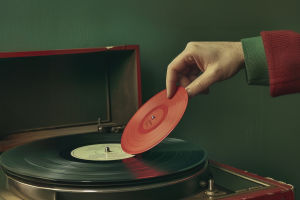Lykkers, welcome to the vibrant world of digital illustration! This groundbreaking medium has completely transformed how artists express their creativity, combining technology and artistry in astonishing ways.
The emergence of digital tools and brushes has opened up a realm of possibilities, enabling creators to explore their imagination beyond the limitations of traditional methods. Are you ready to delve into the fascinating evolution of digital brushes and the artists who wield them?
1960s: Accidental Birth
The spark ignited in the 1960s, when pioneering engineers experimented with mainframe computers to generate patterns for scientific visualization. Unexpectedly, their oscilloscope patterns possessed stark, geometric beauty – the first "computer art." These weren't brushes yet, but they proved machines could generate aesthetics. E.E. Zajac's early animations hinted at motion's creative potential.
Sketchpad: First Light
In 1963, Ivan Sutherland introduced Sketchpad. This revolutionary system used a light pen on a cathode-ray tube monitor. For the first time, users drew directly onto a screen! Lines could be manipulated, scaled, and stored digitally. Though primitive, Sketchpad birthed core concepts: vector graphics, user interface, and real-time interaction – the DNA of digital art tools.
1980s: Desktop Dawn
The personal computer boom changed everything. In 1984, the introduction of the mouse-driven canvas revolutionized digital art. Artists used 1-bit brushes (simple black/white pixels) to create icons and illustrations. In 1990, a groundbreaking image editing software was released, featuring one of the first brush engines with customizable tips, opacity control, and layers—a seismic shift that merged photo retouching with digital painting.
Painter's Tactile Leap
In 1991, a new digital painting program redefined realism for artists. Its innovative engine could simulate the blending of wet paint, the grain of a pencil, and the texture of canvas. Artists could select digital brushes that mixed colors on-screen or tools that mimicked the effect of charcoal, leaving authentic-looking trails. This was not mere imitation—it was digital emulation with remarkable physical fidelity.
Tablets Feel the Flow
Hardware soon advanced to meet artists' needs. The introduction of pen-based tablets brought pressure sensitivity—pressing harder would create thicker lines. With the addition of tilt recognition, angling the stylus could mimic the shading techniques of a real pencil. Programmable shortcut keys on these devices helped streamline creative workflows. The gap between hand movement and digital response disappeared, giving artists immediate, tactile feedback and making the drawing process feel more natural and intuitive.
Brushes Get Brainy
Modern brush engines became incredibly sophisticated. Apps like Procreate, Clip Studio Paint, and Photoshop CC offer:
Dual Texture Control: Layer canvas grain under brush grain for complex surfaces.
Velocity Tracking: speed adjusts opacity/thickness dynamically.
Brush Stabilizers: Smooth shaky lines without losing spontaneity.
Customizable Dynamics: Map pen tilt, rotation, or stylus wheel to brush size/texture.
AI Joins the Studio
Artificial Intelligence now supercharges brushes:
Style Transfer Brushes: Apply Van Gogh's texture or ink wash aesthetics instantly.
Smart Smoothing: AI predicts paths for cleaner lines.
Auto-Color Harmony: Brushes suggest palettes based on initials.
Texture Synthesis: Generate realistic rust, fur, or moss textures on-the-fly.
Mobile Revolution
Tablets put studio power in backpacks. Apps leverage GPU acceleration for buttery-smooth 120Hz brush response. Cloud syncing lets artists sketch on a bus, refine on a desktop. Portability merged with professional power, democratizing high-end tools.
Masters Speak Digitally
Legendary artists embraced these tools:
Loish (Lois van Baarle): Mastered soft airbrushes and textured liners for iconic character art.
Craig Mullins: Pioneered matte painting with custom brushes mimicking traditional media.
Future: Immersive
What's next? VR painting apps like Tilt Brush and Quill let artists sculpt light in 3D space. Haptic gloves may simulate brush resistance. Cloud-based AI brushes could learn individual artist styles, suggesting perfection. The line between physical and digital creation continues to blur.
Your Brush Awaits
Lykkers, the evolution isn't just history – it's your toolkit now. Dive into brush libraries; tweak grain sliders; map tilt behaviors. Experiment with a digital watercolor brush that blooms or a charcoal tool that smudges authentically. Share your favorite brush hacks or the tool that changed your workflow. What will your next create? The canvas is digital, but the passion is timeless.


